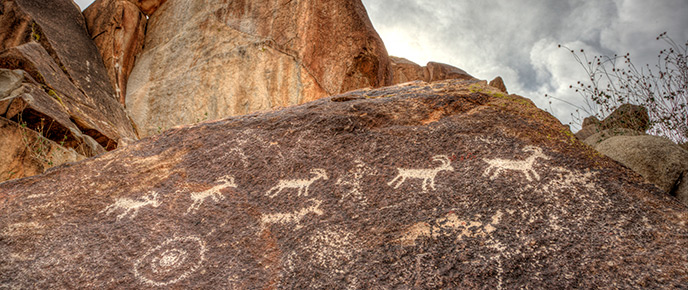
Petroglyphs in Grapevine Canyon, Lake Mead National Recreation Area. Photo Credit: National Park Service.
The word Patayan is a Hualapai word meaning “old people,” and is the term used by archaeologists to discuss the archaeological culture centered on the Colorado River region of Arizona, southeastern California, and southern Nevada – the hottest and driest region of the Southwest – from about A.D. 700 to A.D. 1540.
Patayan peoples were floodwater farmers, hunter-gatherers, and fishers. Although farmers to an extent, Patayan peoples apparently maintained a rather mobile lifestyle. Yuman oral traditions, for example, tell of ancestral population movements between Lake Cahuilla (the modern Salton Sea) and the Colorado River, likely related to periods of lake fill and recession.
The Patayan people are probably best known for the desert intaglios and geoglyphs – immense geometric shapes, animal, and human figures etched into the desert pavement or formed of arranged stones on the surface.
Along the Lower Gila River, Patayan peoples maintained ties with their neighbors, the Hohokam, participating to some extent in the Hohokam culture.
After A.D. 1300, Patayan people expanded east into the upland areas of the western Arizona deserts – areas abandoned by the Prescott and Cohonina peoples around the same time or a bit earlier. The Patayan were ancestral to the Yavapai, Hualapai, and Havasupai people in the upland regions, and to the Yuman-speaking peoples of western Arizona and southern California, including the Cocopa, Quechan, and Mojave.
